Note: In parallel with the exhibition about the work of E.A.T at the Museum der Moderne in Salzburg, another exhibition: Hippie Modernism: The Struggle for Utopia that will certainly be worth a detour at the Walker Art Center in Minneapolis later this autumn.
Via Dezeen
-----
The architecture and design of the counterculture era has been overlooked, according to the curator of an upcoming exhibition dedicated to "Hippie Modernism".
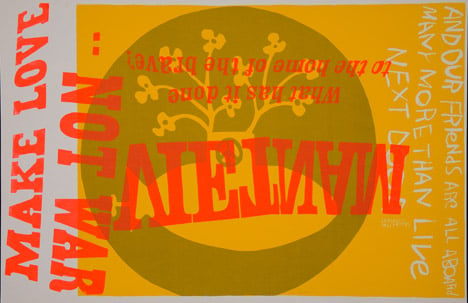
Yellow submarine by Corita Kent, 1967. Photograph by Joshua White
The radical output of the 1960s and 1970s has had a profound influence on contemporary life but has been "largely ignored in official histories of art, architecture and design," said Andrew Blauvelt, curator of the exhibition that opens at the Walker Art Center in Minneapolis this autumn.
"It's difficult to identify another period of history that has exerted more influence on contemporary culture and politics," he said.
"Much of what was produced in the creation of various countercultures did not conform to the traditional definitions of art, and thus it has largely been ignored in official histories of art, architecture, and design," he said. "This exhibition and book seeks to redress this oversight."
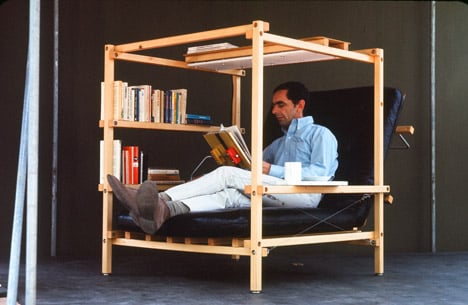
Superchair by Ken Isaacs, 1967
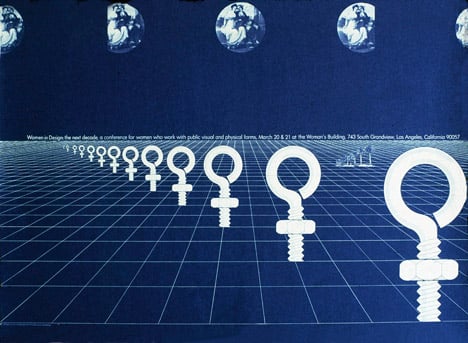
Women in Design: The Next Decade by Sheila Levrant de Bretteville, 1975. Courtesy of Sheila Levrant de Bretteville
While not representative of a formal movement, the works in Hippie Modernism challenged the establishment and high Modernism, which had become fully assimilated as a corporate style, both in Europe and North America by the 1960s.
The exhibition, entitled Hippie Modernism: The Struggle for Utopia will centre on three themes taken from taken from American psychologist and psychedelic drug advocate Timothy Leary's era-defining mantra: Turn on, tune in, drop out.
Organised with the participation of the Berkeley Art Museum/Pacific Film Archive, it will cover a diverse range of cultural objects including films, music posters, furniture, installations, conceptual architectural projects and environments.
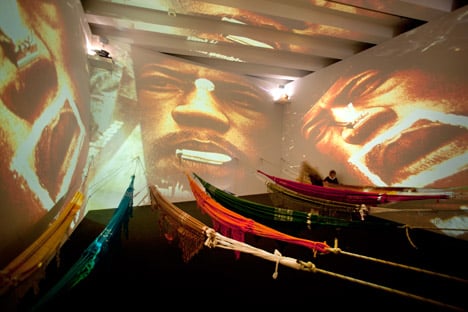
Hendrixwar/Cosmococa Programa-in-Progress, 1973. Courtesy of the Walker Art Center collection, Minneapolis
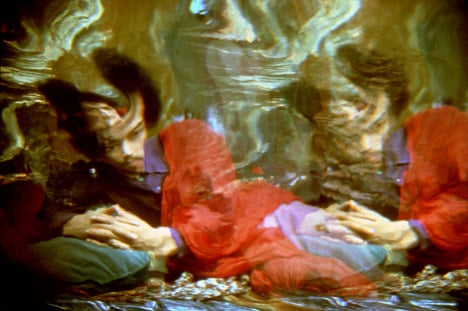
Jimi Hendrix, Ira Cohen, 1968. Photograph from the Mylar Chamber, courtesy of the Ira Cohen Archive
The Turn On section of the show will focus on altered perception and expanded individual awareness. It will include conceptual works by British avant-garde architectural group Archigram, American architecture collective Ant Farm, and a predecessor to the music video by American artist Bruce Conner – known for pioneering works in assemblage and video art.
Tune In will look at media as a device for raising collective consciousness and social awareness around issues of the time, many of which resonate today, like the powerful graphics of the US-based black nationalist party Black Panther Movement.
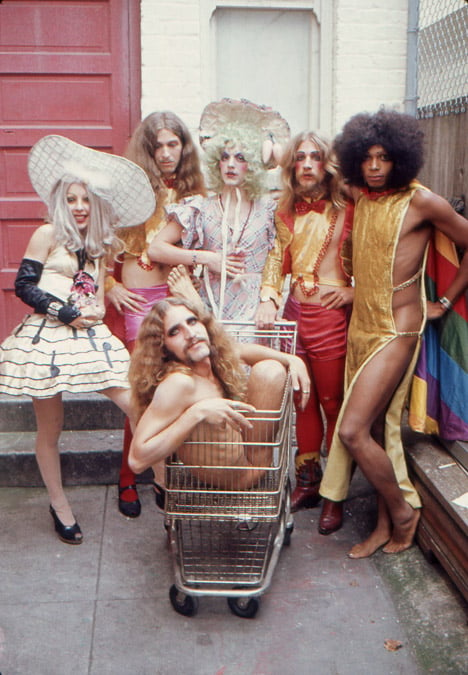
Untitled [the Cockettes] by Clay Geerdes, 1972. Courtesy of the estate of Clay Geerdes
Drop Out includes alternative structures that allowed or proposed ways for individuals and groups to challenge norms or remove themselves from conventional society, with works like the Drop City collective's recreation dome – a hippie version of a Buckminster Fuller dome – and Newton and Helen Mayer Harrison's Portable Orchard, a commentary on the loss of agricultural lands to the spread of suburban sprawl.
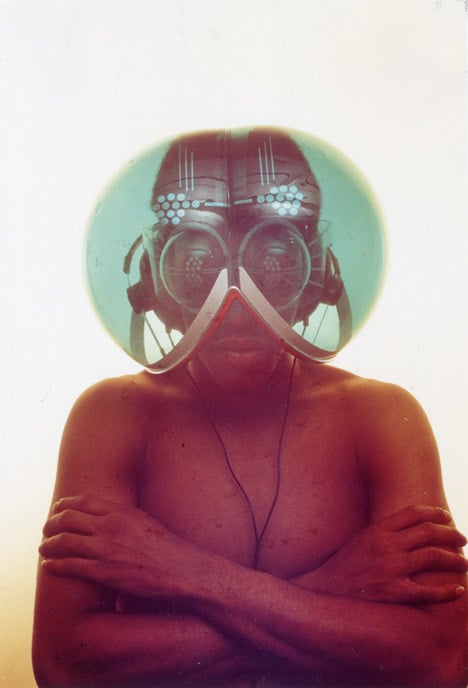
Environment Transformer/Flyhead Helmet by Haus-Rucker-Co, 1968. Photograph courtesy of Haus-Rucker-Co and Gerald Zugmann
The issues raised by the projects in Hippie Modernism – racial justice, women's and LGBT rights, environmentalism, and localism among many other – continue to shape culture and politics today.
Blauvelt sees the period's ongoing impact in current practices of public-interest design and social-impact design, where the authorship of the building or object is less important than the need that it serves.

Payne's Gray by Judith Williams, circa 1966. Photograph courtesy of the Morris and Helen Belkin Art Gallery, The University of British Columbia
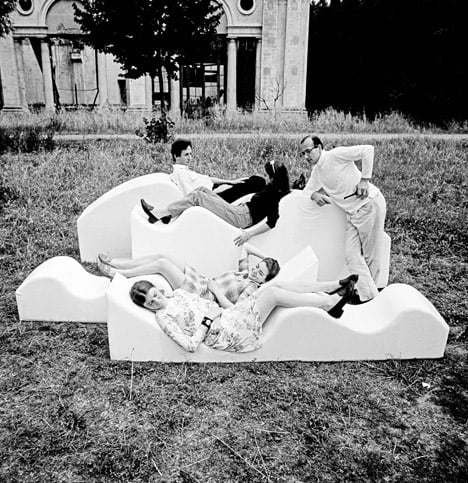
Superonda Sofa by Archizoom Associati, 1966. Photograph courtesy of Dario Bartolini, Archizoom Associati
Many of the exhibited artists, designers, and architects created immersive environments that challenged notions of domesticity, inside/outside, and traditional limitations on the body, like the Italian avant-garde design group Superstudio's Superonda: conceptual furniture which together creates an architectural landscape that suggests new ways of living and socialising.
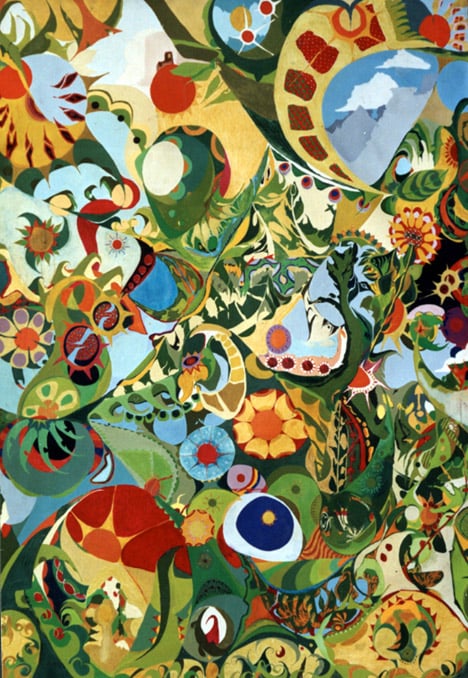
Hello Dali by Isaac Abrams, 1965
Blauvelt sees the period's utopian project ending with the OPEC oil crisis of the mid 1970s, which helped initiate the more conservative consumer culture of the late 1970s and 1980s.
Organised in collaboration with the Berkeley Art Museum and the Pacific Film Archive, Hippie Modernism will run from 24 October 2015 to 28 February 2016 at the Walker Art Center.
















